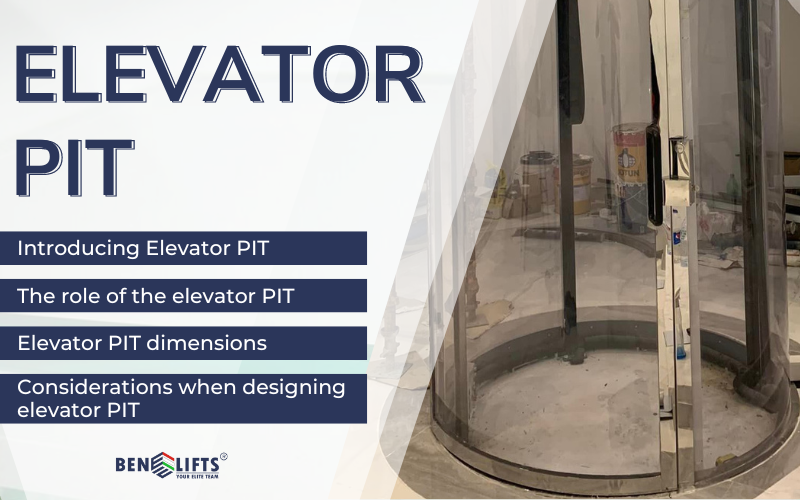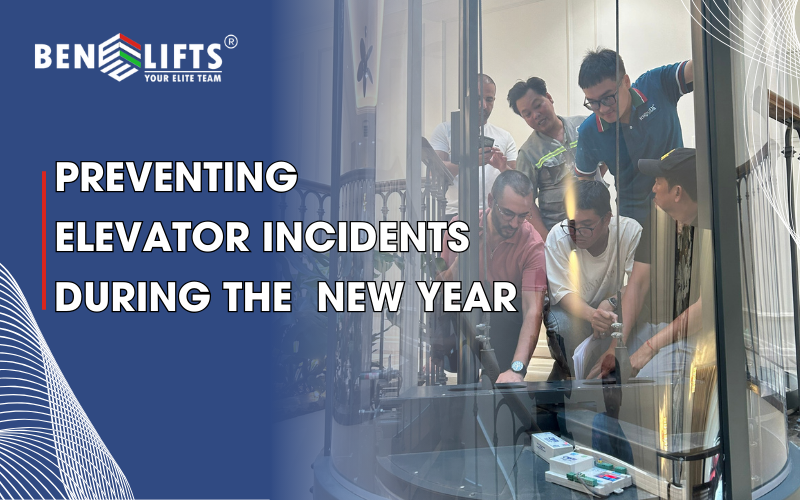The elevator pit is an important part of elevator installation. The structure of the elevator pit will affect the house's foundation and design... Therefore, you need to choose an elevator product with a suitable elevator pit design. Let's explore more useful information about standard homelift pits with Benelifts!
1. What is an elevator pit?
In the construction of an elevator, there is a position where the elevator cabin moves down to create balance with the floor of the house, which is the elevator pit. The elevator pit includes the empty space at the bottom of the elevator shaft, measured from the bottom of the elevator shaft to the floor of the first stop.
Most elevators today will require a pit, however, some modern types of homelifts do not require a pit or only require a shallow pit, about 120mm.
2. The role of the elevator pit
The pit is an important design element of the elevator and has 3 main functions:
Shock absorption, reducing the impact force from the cabin: The shock-absorbing part in the pit absorbs and reduces the impact force from the car, helping the elevator operate smoothly and safely.
Limiting cabin collisions at the end of the journey: The space created by the pit helps limit collisions when the cabin moves beyond the travel range.
Serving maintenance work: Many elevators have large pits, providing space for the technical team to perform maintenance, replace components, or troubleshoot issues during use.
Thanks to the application of advanced wingding drum machine technology, Benelifts homelifts do not require a pit or only require a very shallow pit (starting from 120mm) to install the homelift frame according to technical standards. In addition, the homelift does not require a machine room or elevator shaft, with a low overhead height (3100mm) facilitating construction.
3. Elevator pit dimensions
To ensure safe and smooth elevator operation, the elevator pit must meet standard size requirements. Currently, the minimum pit depth for traditional elevators is 600mm and the maximum is 1400mm. Due to the faster speed of joint venture elevators compared to imported ones, a pit depth of over 550mm is often required.
For Benelifts' imported homelifts, the pit depth is 120mm. The shallow pit depth does not affect the foundation structure, making it suitable for all types of homes from renovated houses, townhouses, villas, penthouses,...
The elevator pit of Benelifts is not too deep
4. Considerations when designing an elevator pit
Construction techniques for elevator pit need to ensure structural standards, dimensions, and specific notes:
The construction of the elevator pit must ensure precise and balanced dimensions vertically with the elevator shaft above. Homeowners ensure this to avoid the cabin colliding with the elevator shaft walls, causing damage or dangerous situations.
Ensure the pit is dry and use the most effective waterproofing materials possible during pit construction to prevent mechanical parts from being damaged if water seeps into the pit, thereby reducing maintenance and repair costs.
Move electrical wires, water pipes out of the pit area or out of areas prone to flooding like bathrooms, septic tanks, swimming pools. If pipes leak and come into contact with important parts in the elevator pit, the elevator's quality may be compromised, posing a danger to homeowners.
To effectively waterproof, homeowners can choose one of two current waterproofing methods: waterproofing membrane (at the beginning of construction) or permeable injection (when water leakage occurs).
5. Benelifts - Homelifts without pit
Benelifts' pitless/pit-shallow homelifts are highly popular in European. When choosing to install a Benelifts homelift, homeowners do not need to worry about preparing space or materials for the elevator pit, as Benelifts homelifts can be installed directly on the ground or with a 120mm pit deepth. Homeowners do not need to dig deep pits, thus avoiding damage to the house's foundation and not affecting feng shui.
Additionally, Benelifts homelifts feature modern glass cabin designs that allow users to have a panoramic view outside. The pitless/shallow pit advantages combined with advanced traction cable systems will help users save time and installation costs, while providing a smooth moving experience.
Benelifts - Prime European Elevator Solutions
If you want to learn more about Benelifts' pitless/shallow pit homelifts, feel free to contact us for advice
Address: Via Augusto Anfossi, 13 20135 Milano (Mi) - Italy
Hotline: +39 344 739 1374
Email: Info@benelifts.com










